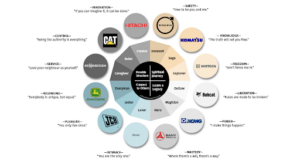How you can ensure your continuous improvement efforts succeed
Guest writer Mark Fitzsimmons offers readers a detailed guide on how you can ensure your continuous improvement efforts succeed in this week’s blog post.
Continuous improvement is a key factor in any organization’s success. It involves constantly identifying areas for improvement, implementing changes, and measuring the effectiveness of those changes. However, continuous improvement efforts can be challenging, and many organizations struggle to see results. In this blog post, we will explore what organizations need to do to ensure successful continuous improvement efforts.
Develop a culture of continuous improvement.
The first step to successful continuous improvement is developing a culture that embraces it. This means creating an environment where employees feel comfortable identifying areas for improvement and suggesting changes. It also means encouraging employees to take ownership of their work and providing them with the tools and resources they need to make improvements.
To develop a culture of continuous improvement, organizations need to communicate the importance of it regularly. They can do this by holding training sessions, providing resources such as books or articles, and highlighting success stories. Organizations can also incentivize employees to participate in continuous improvement efforts by offering rewards for suggestions or improvements that lead to significant results.
Establish a clear process for continuous improvement.
Establishing a clear process for continuous improvement is critical to success. This process should include the steps for identifying areas for improvement, collecting data, analyzing the data, developing and implementing solutions, and measuring the effectiveness of those solutions.
The process should be well-defined and communicated to all employees. It should also be flexible enough to allow for changes as needed. By having a clear process in place, organizations can ensure that everyone is on the same page and that improvements are made consistently and efficiently.
Set measurable goals.
Continuous improvement efforts should be guided by measurable goals. These goals should be specific, measurable, achievable, relevant, and time-bound (SMART). They should also align with the organization’s overall objectives.
Setting measurable goals allows organizations to track their progress and identify areas where improvements are needed. It also provides motivation for employees and helps keep everyone focused on the same objectives.
Use data to inform decisions.
Data are essential for identifying areas for improvement and measuring the effectiveness of changes. Organizations should collect data regularly to inform their decisions.
Data can be collected in many ways, such as through surveys, customer feedback, or process monitoring. Once data are collected, they should be analyzed and used to identify areas for improvement. Organizations can then develop solutions and measure the effectiveness of those solutions by collecting more data.
Involve employees in the process.
Employees are an essential part of continuous improvement efforts. They are the ones who do the work and have first-hand knowledge of the processes and procedures that need improvement.
Organizations should involve employees in the process by encouraging them to identify areas for improvement and providing them with opportunities to contribute to the development of solutions. This can be done through brainstorming sessions, focus groups, or suggestion boxes.
Involving employees in the process also helps build buy-in and ownership of the changes. When employees feel like they have a stake in the process, they are more likely to support the changes and contribute to their success.
Provide resources and support.
Continuous improvement efforts require resources and support. Organizations should provide employees with the tools and resources they need to make improvements. This may include training, access to data and information, or support from management.
Organizations should also provide support for continuous improvement efforts by assigning a dedicated team or individual to oversee the process. This team or individual should be responsible for facilitating the process, providing guidance and support, and ensuring that the process is followed consistently.
Celebrate successes.
Finally, organizations should celebrate successes. Continuous improvement efforts can be challenging and time-consuming, so it is essential to recognize and celebrate the progress made along the way. Celebrating successes helps build momentum and motivates employees to continue making improvements.









